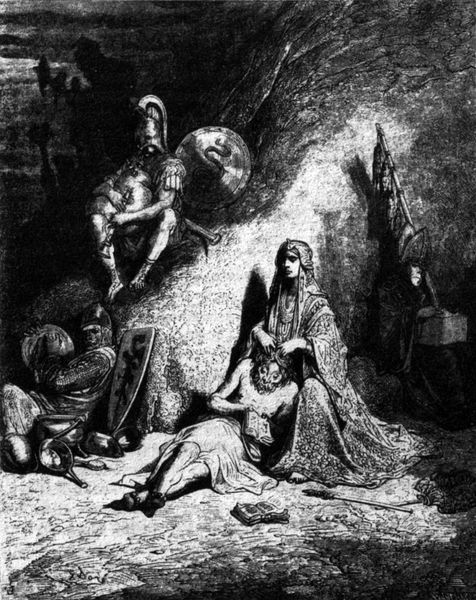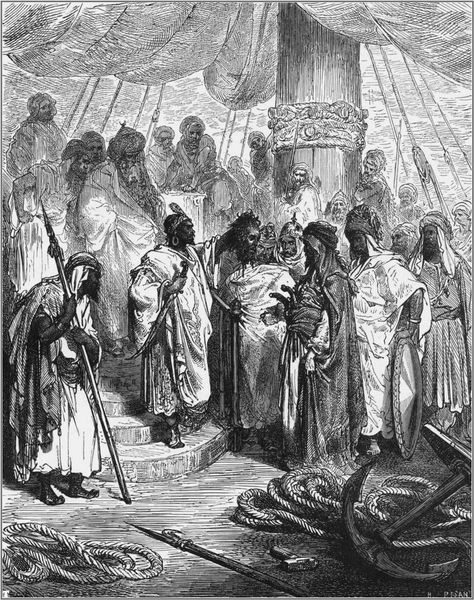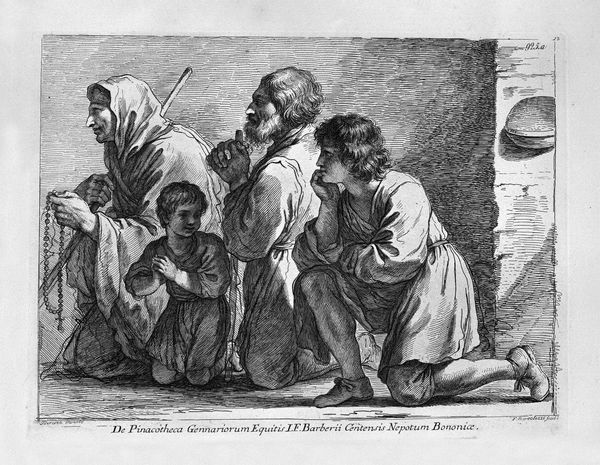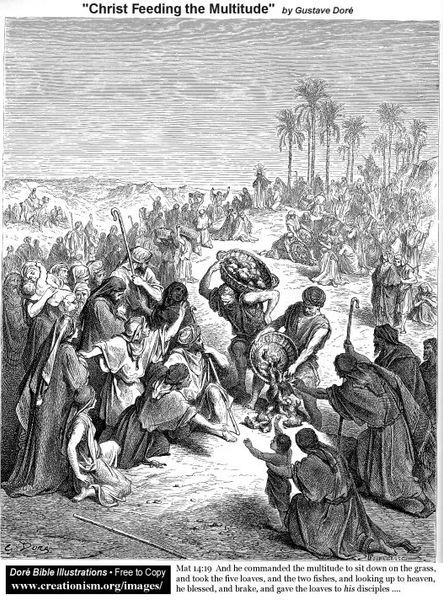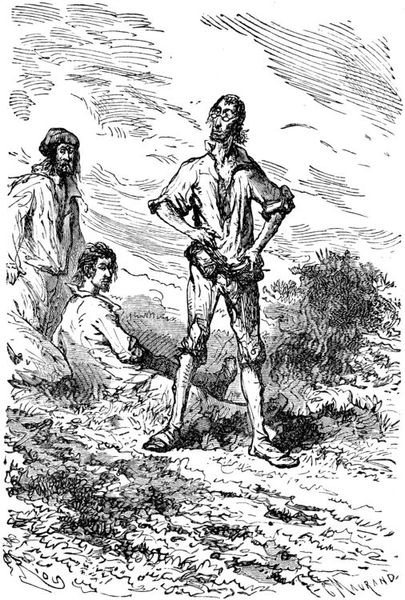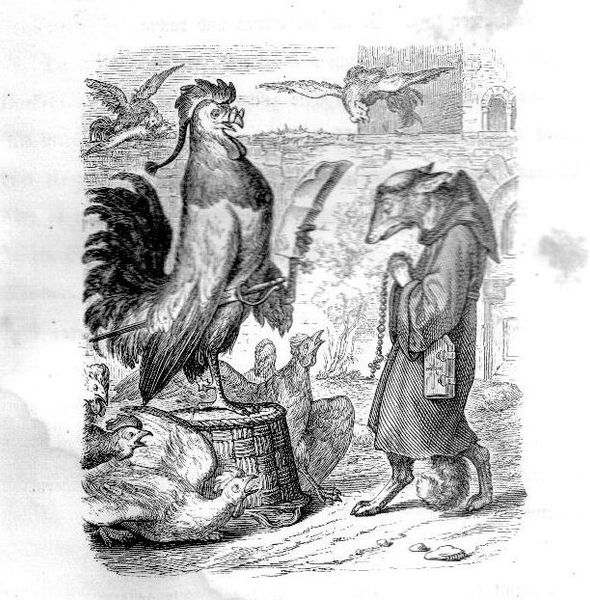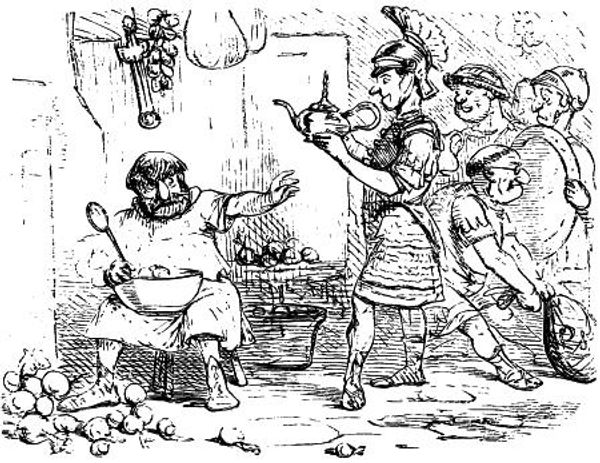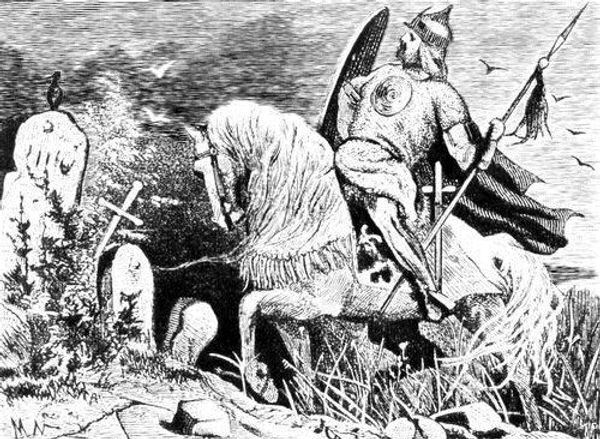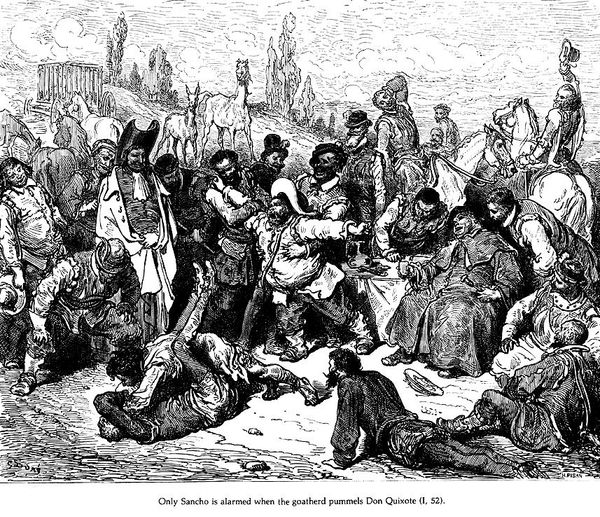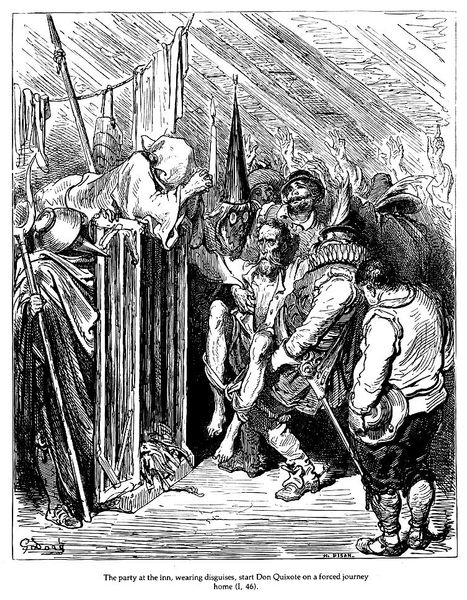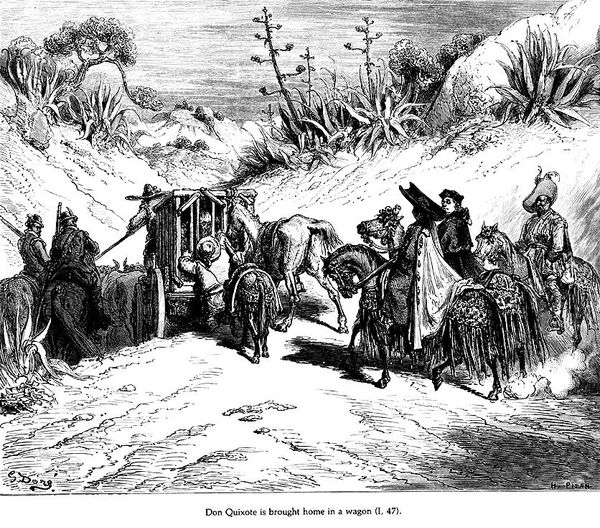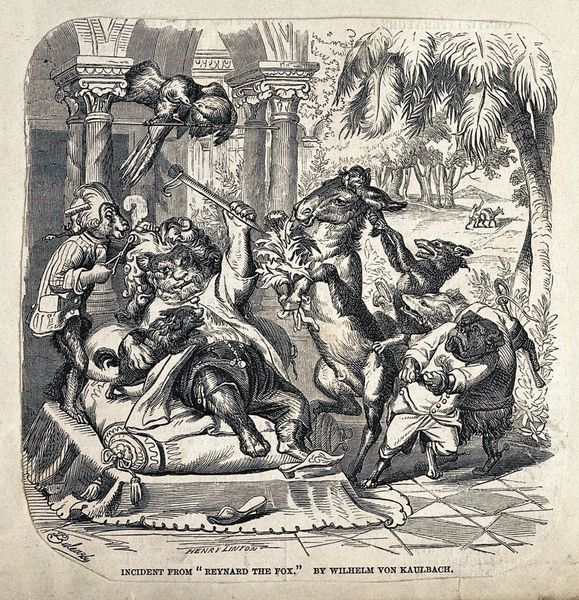
engraving
#
narrative-art
#
figuration
#
folk-art
#
history-painting
#
engraving
Copyright: Public domain
Editor: This is Wilhelm von Kaulbach's "Reineke Fuchs" from 1857, made with engraving. The scene is packed with animal characters acting out a drama, it seems quite satirical, but what strikes you most about it? Curator: Indeed. The animal allegory is potent. This image carries so much cultural memory. It's an echo chamber of fables. Consider the lion enthroned – a classic symbol of sovereignty, power, often linked to biblical figures, like the Lion of Judah. But here, that traditional iconography is skewed, placed within a distinctly satirical context. What effect does this juxtaposition create for you? Editor: It definitely feels like the artist is questioning authority, by giving the lion human traits and a kind of ridiculous court surrounding him. It all looks corrupt somehow! Curator: Precisely! Think about the other animals: the fox, always the trickster; the bear, embodying brute force. Each creature bears symbolic baggage, culturally loaded through centuries of storytelling. Look at the details - what emotions do these animal symbols evoke? Editor: Now I see how all the creatures’ body language tells a story too; how they stand or kneel indicates what position or role they occupy. Like a human courtroom! I guess each culture will bring their own interpretations to this. Curator: Absolutely! It is important to appreciate that symbols have fluctuating values determined by different historical and cultural factors, isn't it? Editor: This was incredibly insightful, it gave me so much to think about in the way that imagery can express power dynamics and the layers of meaning. Thanks! Curator: It has been a pleasure. Visual symbols build cultural continuity.
Comments
No comments
Be the first to comment and join the conversation on the ultimate creative platform.
